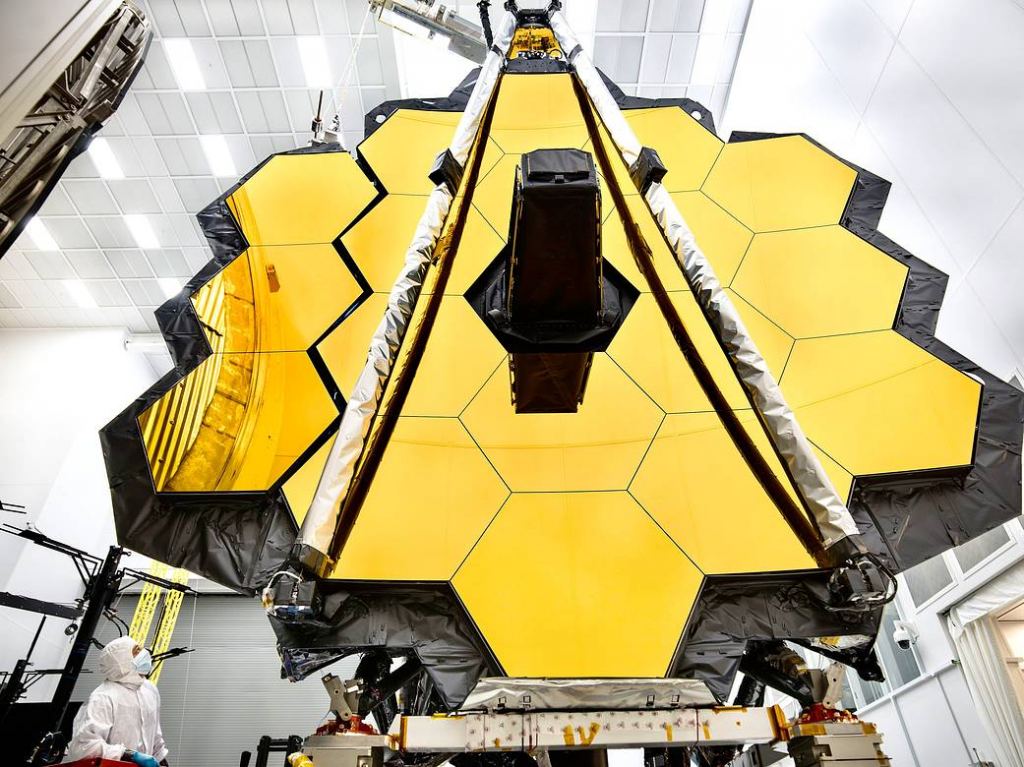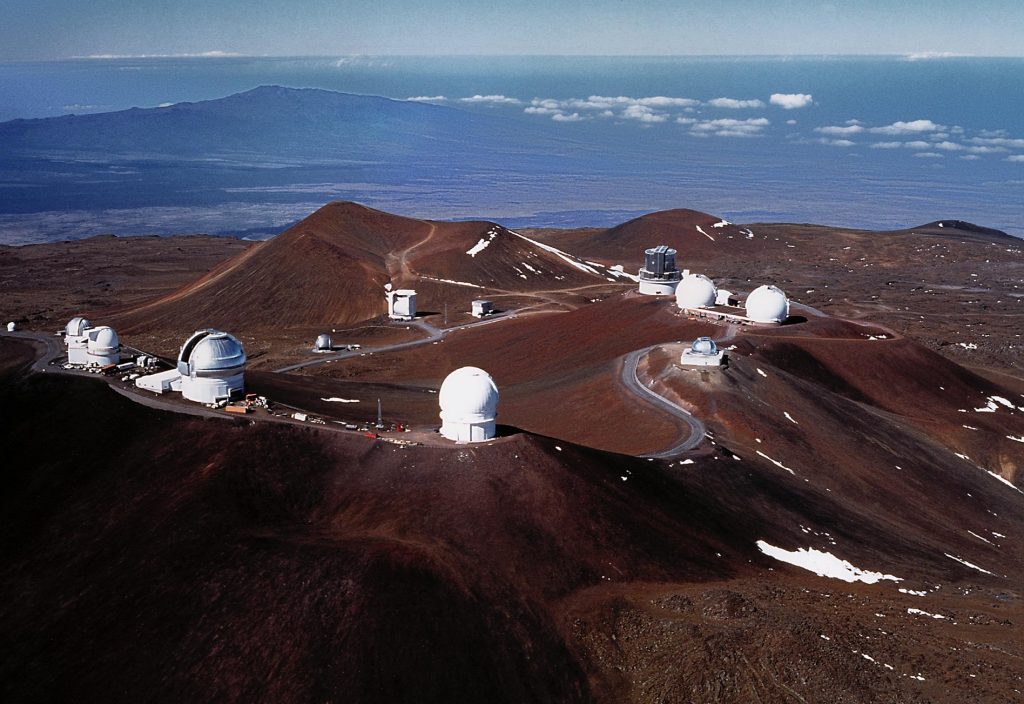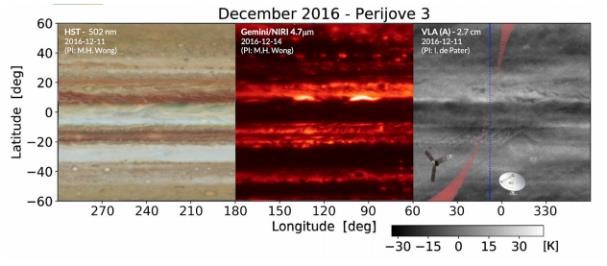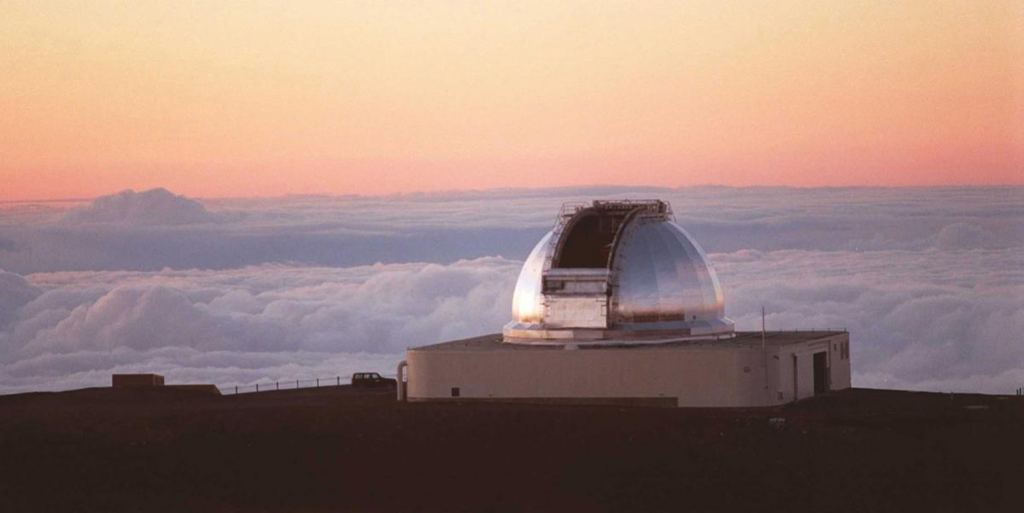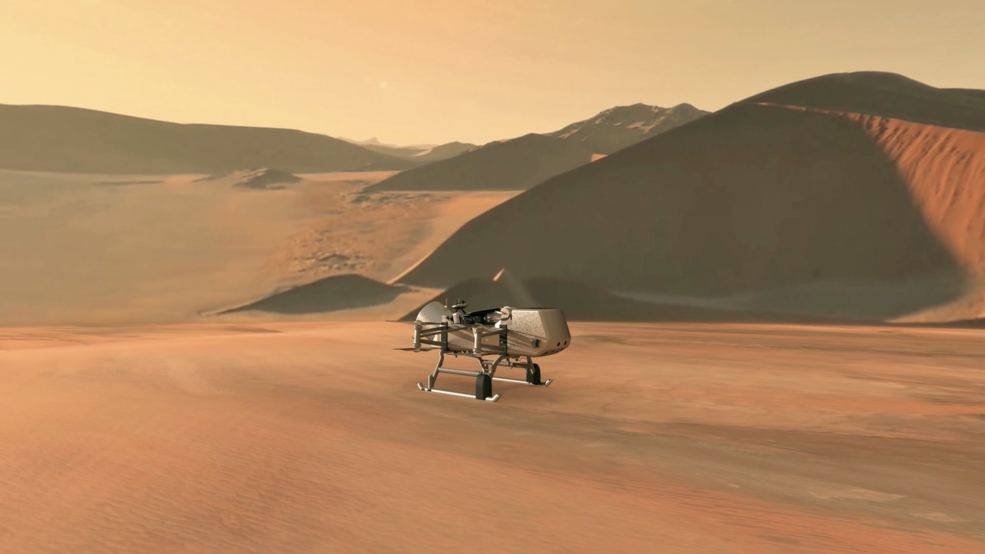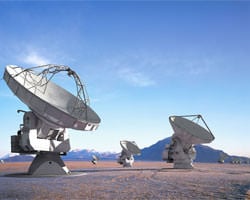Anyone who has ever worked on a team knows that their strength lies in coordination and a shared vision. However, it is not always easy to provide that coordination and shared vision, and any team that lacks that cohesiveness becomes more of a hindrance than a help.
Science is not immune to the difficulties of running effective teams. There is plenty to be gained from more coordination between differing silos and physical locations. Recently a meeting in Chile prompted a group of scientists to propose a plan to change that. The result is a white paper that points out the potential benefits of coordinating ground, orbital and *in situ* based observations of objects. But more importantly, it suggests a different path forward where all of the space science community can benefit from the type of coordinated output that can only come from a cohesive team.
The suggested path laid out in the white paper began at the Planets2020 conference in Chile, hosted by the ALMA observatory. The meeting took place back in March, right before the Coronavirus outbreak began to restrict travel. At the conference, there was a significant amount of discussion focused on the capabilities of different Earth and space based observing platforms. The intention was to learn more about missions that coordinated ground and space-based observations, and to flesh out future ideas of how to replicate that coordination with new and existing platforms to make the best of their different capabilities. The lead author of the white paper, Vincent Kofman, a research chemist at Goddard Space Flight Center, took on that the task of coordinating that team and produced a paper that clearly lays out a better way to perform observations.
The main reason why such coordination is important comes down to how imaging systems interact with different wavelengths of light. The electromagnetic spectrum is extremely large. It includes all types of light, such as radio, infrared, x-rays, ultraviolet and visible light. There is no one single sensor that can collect data in all of those different wavelengths at the same time. Therefore, scientists have developed a plethora of instruments that are extremely good at collecting data in one specific spectrum, such as radio (ALMA), or mid-range infrared (James Webb).
The down side of this specialization is that those instruments are blind in other spectral ranges. If a scientific team is only observing in one type of light, there is a chance that they could miss important aspects of a phenomena they are studying that are only visible in a different spectral band.
Much of the planetary science data collected is the result of spacecraft that are sent to a planetary system to perform in situ* observations. However, due to the high cost of developing space-based systems and then launching them into orbit, mission planners for these in situ* missions must be very selective about what types of instruments they allow on board their spacecraft. What this normally means is that they are not able to bring imagers that are capable of covering the entire electromagnetic spectrum.
That is where coordination with ground and near-earth-orbit based telescopes comes in. There are many telescopes in those locations, such as the Atacama desert or Hawaii's Mauna Kea, that are extremely large, and can provide very high resolution images in specific spectral bands, such as radio, microwaves, or infrared. Infrared is particularly useful as there is a lot of physical data points that can be obtained in a single measurement, such as pressure, temperature, and molecular abundances. If a mission planner of a planetary exploration spacecraft mission can coordinate observations with these much larger, specialized observatories, they will no longer need to include them on their own spacecraft. However, if they are unable to coordinate simultaneous observations, then they would lose out on the spectra that the observatories closer to home can provide.
Another advantage that earth-based observatories have over their in situ* counterparts is their ability to image a whole planet at once. Many orbiter or fly by missions are only capable of measuring part of their subject at a single point in time. This results in a loss of contextual understanding, as dynamic phenomena that might be observed in a single place by the in situ* spacecraft might not be present over the entire surface of the planet or moon. Support from earth-based telescopes, whether on the ground or in space, could provide that larger context that the spacecraft itself lacks.
This sort of coordination to cover all of the spectral bases has already been accomplished with one *in situ* planetary mission: the Juno spacecraft currently in orbit around Jupiter. The resulting coordination between the Juno spacecraft and a series of earth-based observatories resulted in over 40 papers that used data from more than one observational source of the Jupiter system during that time.
There are plenty of other low hanging observational fruit available to coordinated efforts like those of Juno. Mars is of particular interest, as it is the most studied planet outside of Earth, and the only one with active rovers physically on its surface. Scientists interested in understanding where the methane from Mars' atmosphere comes from would certainly benefit from a coordinated observational campaign between several of the orbiters around Mars (TGO and MAVEN), and earth-based telescopes such as NASA's Infrared Telescope Facility in Hawaii.
The orbiters around Mars provide excellent two-dimensional slices of spectral data as they are passing over a specific strip of the planet. However, observatories closer to Earth can provide data on the entire hemisphere of the planet that is facing them, and add a layer of depth that would allow scientists to piece together a three-dimensional picture that would be impossible using only data from the orbiters.
There are still some limitations to earth-based observations, such as the fact that methane is present in Earth's atmosphere as well, which could skew the data when looking at Mars. To get around this problem, scientists came up with an ingenious method of only observing Mars while it is moving away from (or toward) Earth at more than 13km a second. This differential speed red- (or blue-) shifts the spectral signature of the Martian methane enough that it can be differentiated from that simply present in Earth's atmosphere.
Another particularly interesting target of joint observations is Titan, which has been the subject of intense scrutiny in recent years due to its hydrocarbon lakes, and its methane/ethane based hydrological cycle.
The moon is so interesting it is about to receive it's own *in situ* visitor in the form of the Dragonfly mission. When Dragonfly lands in 2034, the white paper team hopes that many Earth-based telescopes will turn their eyes toward Titan, as the data collected from the surface can then be coordinated with more remote observations. Dragonfly will be equipped a mass spectrometer, which allows the detection of molecules which are impossible to see remotely, and reveals the full composition of the atmosphere. Earth-based observation could in turn provide context for these measurements.
Those combined observations will focus on the organic chemistry that is taking place on the moon. A particularly useful Earth-based tool is ALMA, the observatory that held the conference that kicked off the white paper. ALMA is a series of radio telescopes, which are particularly good at observing organic compounds and making detailed maps of its observational subjects. Both capabilities would be particularly helpful in helping the Dragonfly mission, and ALMA's operators are already very familiar with Titan.
The array actually used Titan as a calibration target for a number of years after it first launched, due to its brightness and seeming stability. The wealth of observations allowed researchers to study Titan and the evolution of its atmosphere, revealing dynamic processes, and leading to improved understanding of the moon. Unfortunately, it also revealed Titan is actively changing, making it less suitable as a flux calibration target. The ALMA team then switched to using a pulsar for future calibrations.
All of the data the ALMA team has collected, as well as almost all astronomical data from all of the observatories that might be conscripted into the joint observational efforts is eventually made free to the public. However, unless the data on a given object was collected simultaneously by more than one observatory, the benefits of coordination are lost as transient phenomena would not be present in both those sets of data. There might be some simultaneous data of an object collected by more than one observational platform buried in their data archives. However, coordinating future observational efforts is much more likely to result in new discoveries rather than trawling through old data. Concerted observations may reveal phenomena that wouldn't be visible without combining the datasets, revealing new and exciting glimpses into foreign worlds.
Coordinating as many of those future observational efforts as possible is the main intent of the new white paper. When the decadal survey the paper is intended to address convenes in a few years, that team will have the opportunity to coordinate a much brighter future for planetary observation.
Learn More:
ArxiV: Synergies between ground-based and space-based observations in the solar system and beyond
ALMA: Planets2020 Conference
The Astrophysical Journal: High-Resolution UV/Optical/IR Imaging of Jupiter in 2016-2019
 Universe Today
Universe Today


